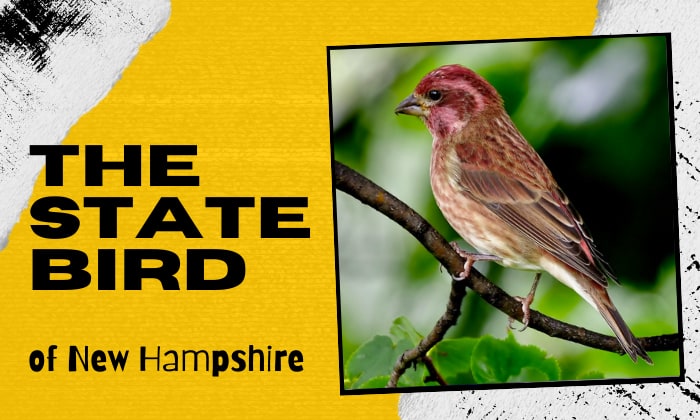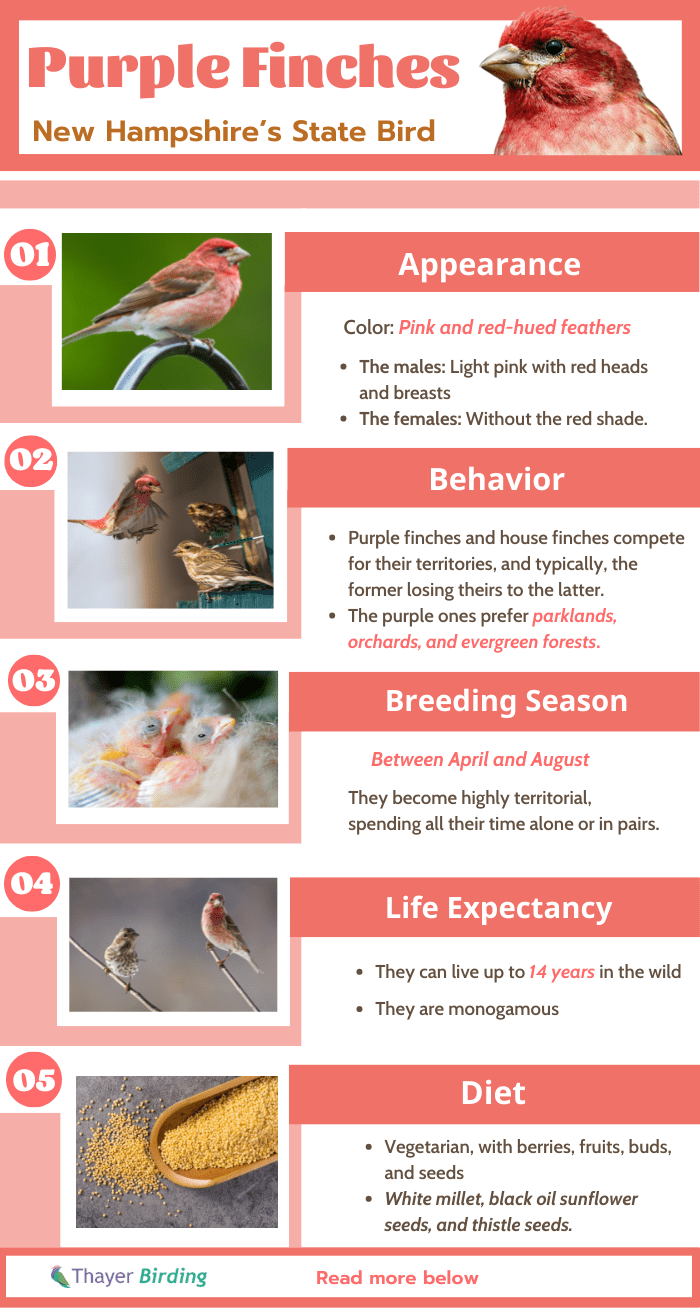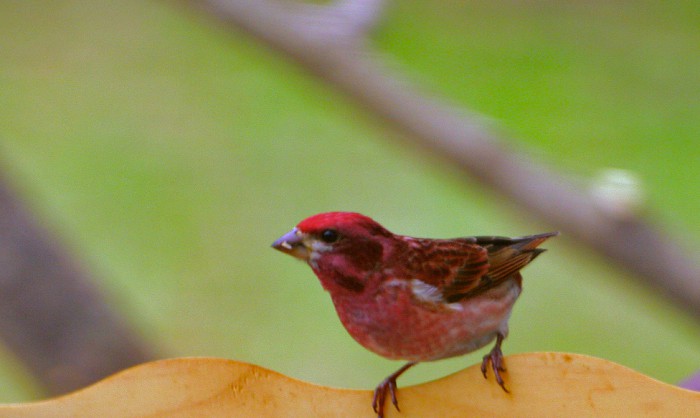The purple finch is the answer to what is the state bird of New Hampshire. But before we delve deeper and know more about the state bird than just its name, we’ll briefly introduce New Hampshire.
It is the 41st most populous state in the United States. Various landscapes, from mountains to lakes, are spread across the state. With a diverse geography, it is not a surprise it attracts many wildlife and bird species.
But why the purple finch? Read more about this bird species and how it became the representative avian of New Hampshire.
Table of Contents
New Hampshire’s State Bird
Purple Finches are birds native to New Hampshire. It breeds throughout the state but is more common in the west and north where there is an abundance of mixed and coniferous forests. You can find them throughout Northern America but not in the western part of the country or in Northern Canada. Let’s get to know these birds.
1. Appearance
These finches are not purple. Instead, they have pink and red-hued feathers. The males have light pink with red heads and breasts, while the females are without the red shade. Both have white stomachs and brown back feathers. Purple finches are often confused with house finches due to the color variations.
2. Behavior
Purple finches and house finches compete for their territories, and typically, the former losing theirs to the latter. The purple ones prefer parklands, orchards, and evergreen forests. In addition, they no longer settle in towns since they avoid heavily populated areas. When the breeding season comes between April and August, they become highly territorial, spending all their time alone or in pairs. Purple finches are monogamous and can live up to 14 years in the wild.
3. Diet
These birds are mainly vegetarian, with berries, fruits, buds, and seeds as part of their diet. Their favorites are white millet, black oil sunflower seeds, and thistle seeds. So, if you want to attract them to your bird feeder, consider filling it with these. Purple finches often forage high in the tree, and you can only see them on the ground during the summer. They dine on caterpillars and beetles in this season.
Frequently Asked Questions
There are many questions surrounding purple finches for those hearing about the official finch for the first time. Here we have some answers to them and facts to back them up.
1. Why is the purple finch the state bird for New Hampshire?
The New Hampshire purple finch received strong support from three prominent nature groups; the New Hampshire Federation of Garden Clubs, the State Federation of Women’s Clubs, and the Audubon Society of New Hampshire. Despite the fierce opposition of Representative Doris M. Spollett, who favored the New Hampshire Red, the purple finch was declared the official state bird of New Hampshire.
2. When did the purple finch become the state bird for New Hampshire?
On February 12, 1957, the purple finch bill sponsored by Representative Robert S. Monahan was put up in front of the House of Representatives. On March 27, 1957, the bill went before the House Committee on Recreation, Resources, and Development.
Mohanan insisted the officials act fast because other states might seize the bird as their representative avian. Finally, on April 25, 1957, Governor Lane Dwinell officially signed the bill making the purple finch New Hampshire’s state bird.
3. Are purple finches rare?
According to the conservation organization Partners in Flight, there are approximately 6.4 million purple finches around the world. Their population trend has been declining due to house finches with which they have an overlapping territory. For now, it is not a big problem, and BirdLife International categorized them as Least Concern in their IUCN Red List.
4. What do purple finches symbolize?
The meaning of purple finch is cheerfulness, wealth, and domesticity. Its symbolism can vary depending on the context and culture, but traditional wisdom links finches with premonition and rainfall. They are considered omens of good things that will come.
5. Are purple finches actually purple?
No. The purple comes from its scientific name Haemorhous purpureus, where purpureus is the Latin word for the purple color.
Conclusion
After asking what is the state bird of New Hampshire and knowing the answer to it, we hope you can recognize a purple finch when you see one. If you are into photography, you can snap some beautiful photos of them in the wild. We hope that all the information in this article helped you learn many things about this fantastic state bird.
What do you want to know about New Hampshire’s state bird and flower? Comment them below because we love hearing from our readers!
In addition, discover our article about other state birds like:
- 11 interesting facts about Arizona’s state bird.
- State bird of Pennsylvania and their facts.
- What is the state bird of Hawaii?

George and I became friends after a birdwatching trip with our new group. And we have been enjoying every adventure together. When he told me the idea of establishing a site that shares our experiences and fun, I immediately agreed. After trials and errors, here we have Thayerbirding.

















